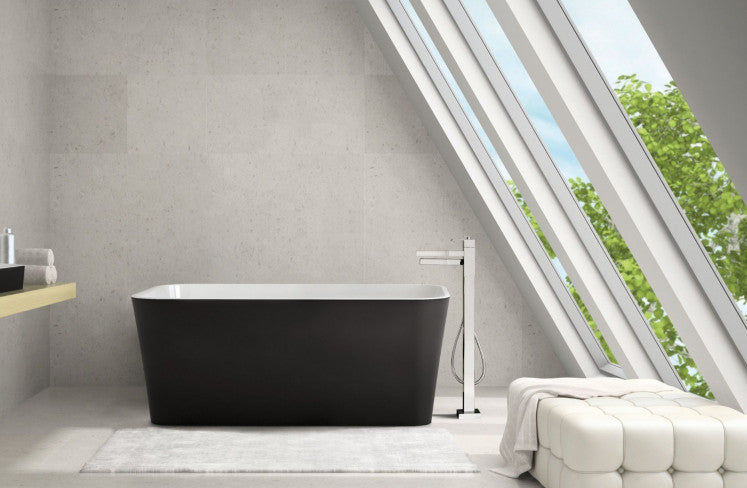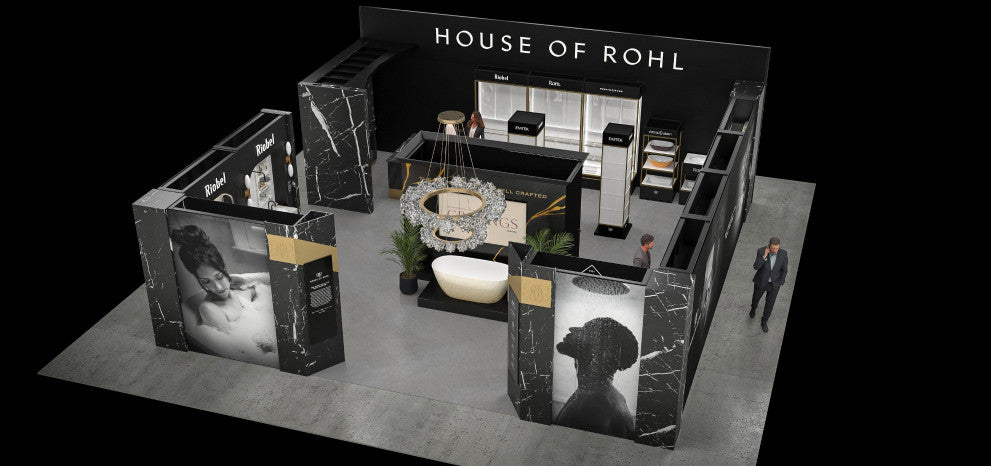

Freestanding vs. Built-In Bathtubs: Which One is Right for Your Bathroom?
by Kirill Kutsak , 8 min reading time
When planning a bathroom remodel, choosing the right bathtub can make all the difference in both style and functionality. Two popular choices are freestanding bathtubs and built-in bathtubs—each offering its own set of benefits and challenges. To help you make an informed decision, this article dives deep into both types, highlighting the pros and cons, design options, installation considerations, and much more. By the end, you’ll have a clearer idea of which bathtub best aligns with your bathroom remodel ideas.
Table of Contents
- Freestanding Bathtubs: A Modern, Luxurious Choice
- Built-In Bathtubs: Practicality and Space Efficiency
- Comparing Freestanding and Built-In Bathtubs: Key Factors to Consider
- Installation Considerations
- Which One is Right for Your Bathroom?
- Material Options and Durability
- Comfort and Bathing Experience
- Installation and Structural Requirements
- Environmental Impact and Sustainability
- Conclusion: Transform Your Bathroom with the Right Bathtub Choice
Freestanding Bathtubs: A Modern, Luxurious Choice
Freestanding bathtubs are standalone tubs that don’t require walls or enclosure. Typically featured in high-end bathrooms, these tubs bring an element of elegance and sophistication. With versatile shapes, sizes, and designs available, they fit seamlessly into a range of aesthetics.
Benefits of Freestanding Bathtubs
- Aesthetic Appeal: Freestanding bathtubs are undeniably eye-catching. They serve as a focal point and can elevate the overall look of a bathroom, adding a spa-like, luxurious vibe.
- Design Versatility: With freestanding tubs, you have numerous style options, from modern minimalism to vintage clawfoot designs. This versatility allows you to choose a tub that complements your bathroom’s style perfectly.
- Flexible Placement: Because they don’t need walls for installation, freestanding bathtubs can be placed almost anywhere. This gives you freedom in layout, allowing you to make the most of your space.
Drawbacks of Freestanding Bathtubs
- Space Requirements: Freestanding bathtubs generally need more space around them, making them less ideal for small bathrooms. They’re best suited to larger spaces where they have room to stand out.
- Limited Storage Options: Unlike built-in tubs, freestanding bathtubs don’t typically have integrated storage options, so additional shelving or racks may be needed for bath products.
- Higher Cost and Installation Complexity: Freestanding tubs often have a higher upfront cost and can require more complex installation, especially if plumbing needs to be rerouted.
Built-In Bathtubs: Practicality and Space Efficiency
Built-in bathtubs (also called alcove or drop-in tubs) are installed against walls and often incorporate shower attachments. They’re a common choice for their practicality, especially in bathrooms with limited space.
Neptune 6032 Albana With Integrated Skirt and Tiling Flange Left-Drain
Benefits of Built-In Bathtubs
- Space-Saving: Built-in bathtubs are ideal for maximizing floor space, as they’re typically installed along walls or within alcoves. This setup is particularly useful in smaller bathrooms.
- Added Functionality: Many built-in tubs come with shower attachments, allowing you to combine both bathing and showering functions in one. This makes them ideal for households with varied preferences.
- Storage-Friendly: Built-in tubs allow for easy integration of storage features. You can install shower niches, racks, or even a tub deck for keeping toiletries and other items nearby.
Drawbacks of Built-In Bathtubs
- Limited Style Options: Built-in bathtubs offer fewer design options than freestanding tubs. Since they’re usually rectangular and enclosed on three sides, they lack the visual appeal of a standalone tub.
- Lower Resale Appeal: While practical, built-in tubs are less of a statement piece compared to freestanding models, which might influence a potential buyer’s perception of luxury.
- Installation Constraints: Built-in tubs must be installed against a wall, so they’re less flexible in terms of placement. Also, replacing a built-in tub during future remodels can be labor-intensive and expensive.
Comparing Freestanding and Built-In Bathtubs: Key Factors to Consider
When choosing between freestanding and built-in bathtubs, it’s important to consider several factors, including your bathroom size, style preferences, budget, and intended functionality. Here’s a side-by-side comparison:
| Factor | Freestanding Bathtub | Built-In Bathtub |
|---|---|---|
| Space Requirement | Requires ample space; best for larger bathrooms | More compact, suitable for smaller bathrooms |
| Aesthetic Impact | Serves as a focal point; luxurious and stylish | Subtle, blends with bathroom layout |
| Installation Cost | Higher due to plumbing and placement flexibility | Generally more affordable |
| Storage | Requires separate storage solutions | Built-in shelves and niches available |
| Functionality | Primarily for soaking; less convenient for showering | Can double as a shower and bath |
| Cleaning Ease | May have gaps between tub and floor for cleaning | Easier to maintain with no exposed edges |
Installation Considerations
Freestanding Tubs
The installation of a freestanding tub can be more intricate and costly, especially if plumbing is not readily accessible in the desired location. Professional installation is highly recommended to ensure proper water connections, floor reinforcement, and stability.
Built-In Tubs
Built-in tubs are generally easier and quicker to install since they typically use existing wall plumbing. If you’re on a tighter budget or want a quicker remodel, a built-in tub can be a more practical option.
Which One is Right for Your Bathroom?
Ultimately, the choice between a freestanding and built-in bathtub depends on your unique needs and space:
Choose a Freestanding Bathtub If
- You have a spacious bathroom and want a visually striking centerpiece that exudes luxury. Freestanding tubs are ideal if you prioritize aesthetics and are willing to invest in a tub that may require additional space and maintenance.
Choose a Built-In Bathtub If
- You’re looking to maximize space, want an all-in-one bath-and-shower combo, or prefer a more budget-friendly option. Built-in tubs are practical, especially in smaller bathrooms or households needing a dual-function bathing area.
Neptune Prague 32x66 Freestanding Tub
Material Options and Durability
Different materials used in bathtubs influence both aesthetics and longevity. Freestanding bathtubs often come in materials like acrylic, cast iron, or stone resin, each providing distinct benefits—acrylic is lightweight and heat-retentive, while cast iron offers durability and a classic appeal. Built-in tubs are typically made of lighter materials like fiberglass or porcelain, which are easier to install but may be less durable. Understanding these material options helps in balancing your design vision with practical needs, especially if longevity or thermal efficiency is a priority.
Comfort and Bathing Experience
Both bathtub types offer unique comfort features. Freestanding bathtubs, with deeper soaking depths, allow for a spa-like experience, particularly if equipped with jets or ergonomic designs. Some models include sloped backrests, perfect for relaxation. Built-in bathtubs, however, are practical for families needing a combined tub and shower setup, which can be useful in homes with limited space. Built-in tubs may also include integrated seats or armrests, making them a comfortable choice for everyday use.
Installation and Structural Requirements
Installing a bathtub requires attention to plumbing, floor support, and wall integration. Freestanding tubs generally need a flat surface and can be challenging if plumbing has to be adjusted for a floor-mounted setup. Built-in tubs, on the other hand, may require precise wall framing and careful measurement to ensure a snug fit, which can add to labor costs. Homeowners should weigh these installation differences carefully, as they influence both the timeline and cost of a bathroom remodel.
Environmental Impact and Sustainability
For the environmentally conscious, choosing a bathtub with sustainable materials can be a deciding factor. Some freestanding tubs, such as those made from reclaimed stone or recycled metals, appeal to eco-friendly users, while built-in tubs with water-saving features might be ideal for reducing household water consumption. Considering the lifecycle of materials and options for efficient water usage can help make a more environmentally responsible choice.
Conclusion: Transform Your Bathroom with the Right Bathtub Choice
Deciding between a freestanding and built-in bathtub can be a pivotal step in your bathroom remodel. Freestanding tubs offer luxurious design and versatile placement, while built-in tubs provide practicality and efficiency for small spaces. By carefully considering your available space, style preferences, and functional needs, you can choose the perfect bathtub that transforms your bathroom into a personal sanctuary.
Ready to take the next step? Explore a wide selection of freestanding and built-in bathtubs to find the perfect fit for your bathroom remodel ideas.
Blog posts
-

, by Ronaldo Grimshaw Craftsmanship Redefined: House of Rohl's Finest Plumbing Fixtures
-

, by Ronaldo Grimshaw Discover House of Rohl's Luxurious Bathroom Collections
-

, by Ronaldo Grimshaw House of Rohl Welcomes New Brands




